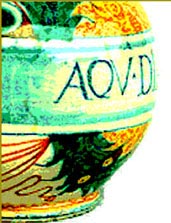
|
Sumari / Índice / Contents |
|
||||||||||||||||||||||||||||
| INNOVACIÓ DOCENT | ||
| REFLEXIONS DE CARA AL PROCÉS D’IMPLANTACIÓ DELS ECTS EN BASE AL CONEIXEMENT DELS PROCESSOS D’ENSENYAMENT-APRENENTATGE ACTUALS |
|
|
| Cambras, T.; Anglès, M.; Díez-Noguera, A.; Moreno, J.J.; Martínez, V.; Mitjans, M.; Vinardell M.P. | ||
| RESEÑA | ||
La implantación de los ECTS como medida de trabajo del alumno supone un reto tanto para profesores como alumnos, ya que no solo implica un cambio en la metodología utilizada en los procesos de enseñanza-aprendizaje actuales, sino sobretodo un cambio en la mentalidad tanto de docentes como discentes. El nuevo sistema implica una interacción mucho más estrecha entre las tareas programadas por el profesor y las actividades que realizan los alumnos. Antes de la implantación de este sistema el Grupo de Innovación Docente Consolidado “Enseñar a aprender Fisiología” del Departamento de Fisiología de la Facultad de Farmacia de la Universidad de Barcelona, ha considerado importante conocer el estado actual de las metodologías utilizadas en los procesos de enseñanza-aprendizaje, para que sirva de reflexión y punto de partida para la implantación del nuevo sistema. Así, en el presente trabajo mostramos los resultados de un proyecto de investigación en docencia en el que se muestra una valoración, obtenida a partir de encuestas, sobre los métodos docentes actuales y la metodología de aprendizaje de los alumnos que cursan las asignaturas “Anatomía y Fisiología Humanas I” y “Fisiopatología”. Los resultados nos permiten reflexionar sobre el proceso de implantación de los ECTS, a la necesidad de una definición clara de los objetivos de las asignaturas, así como de las actividades a ser realizadas por el alumno y a una coordinación entre el equipo docente que debe ser clave para una buena implantación del nuevo sistema. |
||
| REVIEW | ||
The implantation of the ECTS as a way of measuring student workload is a challenge both for professors and for students, since it implies a change not only in the methodology used in the current teaching-learning processes but also in the mentality of both teachers and learners. The new system implies a much narrower interaction between the tasks programmed by the teacher and the activities done by the students. Prior to the implantation of this system, the Group of Teaching Consolidated Innovation “Teaching the Learning of Physiology” of the Department of Physiology of the Pharmacy Faculty of the Universidad de Barcelona already considered it important to know the current state of the methodologies used in the processes of teaching-learning, in order for this to serve as reflection and starting point for implantation of the new system. Thus, the present text shows the results of our research project on teaching, showing evaluation—obtained on the basis of questionnaires—of the current teaching methods and the learning methodology of students who study the subjects “Human Anatomy and Physiology I” and “Physiopathology”. The results allow us to reflect on the process of implanting the ECTS, on the need for a clear definition of the aims of the subjects studied, and on the activities to be done by the student, as well as the coordination among the teaching team that must be a key element for good implantation of the new system. |
||
| tornar al sumari | ||

| Crèdits / Crédits / Credits |
|
Directora: |
|||||
|
|||||
|
Editora Montserrat Pujol Cubells Comitè científic / Comité científico / Advisory Board Carles Benedi González Ma Pilar Vinardell Martinez-Hidalgo Mercedes Gracenea Zugarramurdi Guillermina Asins Muñoz Montserrat Pujol Cubells María Cruz Pellín Mira Glòria Rosell Pellise Alejandro Esteller Perez Mercedes Monteoliva Sánchez Joaquín José Nieto Gutierrez Luis F. Alguacil José Angel Fontenla Gil Basilio Valladares Hernández Jorge Antonio Guisantes del Barco Fernando González Velasco Juan Carlos Garcia Monteagudo |
|||||
|
|
|
|
|
|
|
|
|
|
|
|
|
|
|
|
|
|

